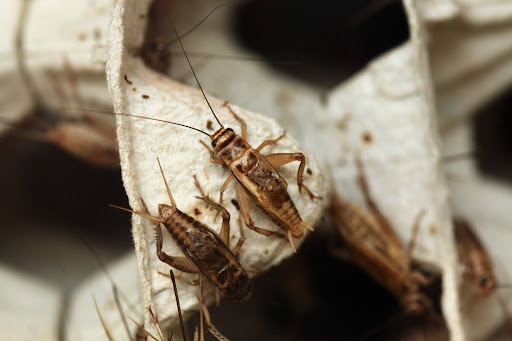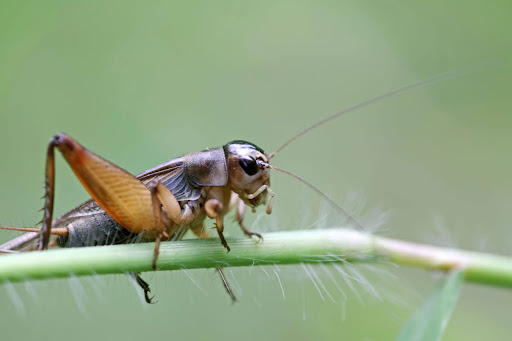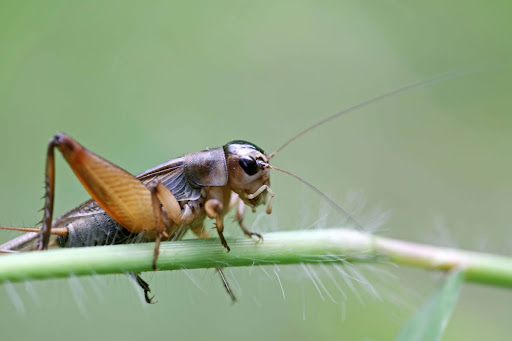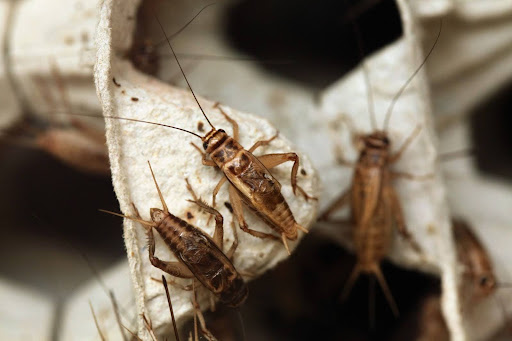There’s nothing quite like the unmistakable chirp of crickets.
If you’re lounging on your porch on a hot summer evening, the sound can be relaxing – tranquil, even.
But when it’s the middle of the night, and you’re trying to sleep, tossing and turning in your bed as the cricket hiding in your bedroom continues to chirp its midnight serenade, the sound is less idyllic – and more aggravating.
Crickets might be small, but their nuisance factor is mighty. The solution just might be in a cricket spray.
So, what are the benefits of cricket spray, and how do you use it around your home? We’ll walk you through it.
Crickets: More Than Just a Noisy Nuisance
Before we discuss in more detail what cricket spray is and why it’s so helpful, let’s rehash why you might want to use it in the first place.
To be quite honest, crickets are a major pain. They’re the background singer to nature’s orchestra, but there’s more to them than meets the eye (or ear). Crickets munch on fabric, paper, and plants, meaning they have the potential to inflict some real damage.
Just imagine discovering your favorite sweater has become a cricket’s midnight snack. The damage is real, and the risk can sneak up on you faster than you might expect.
Not only do crickets feast on your belongings, but they also invite other, less friendly pests. Spiders and centipedes see crickets as a tasty treat, so when there’s one, plenty of others will follow. If you’re able to keep crickets at bay, you can deter an entire army of unwanted pests.
Again, there’s also the noise factor. Cricket chirping is charming for about five minutes, but relentless chirping can wreck any quiet evening.
DIY Methods to Get Rid of Crickets
Cricket spray is an effective way to get rid of these pests, but there are other DIY methods you can try. Natural deterrents, like diatomaceous earth and boric acid, can be sprinkled around entry points to deter crickets without the use of chemicals.
Simple traps can also work wonders. Set up sticky traps in key areas to catch and dispose of crickets effortlessly. These traps are non-toxic and can be a great addition to your pest control routine.
Finally, consider adjusting your home environment. Crickets are attracted to light and moisture. By minimizing outdoor lighting at night and reducing dampness inside your home, you can naturally reduce cricket populations (as well as other pests that might be lingering around as a result of your cricket infestation).
What is Cricket Spray?
No two cricket sprays are exactly alike, so be sure to read the ingredients list on the product you purchase.
In general, cricket sprays are crafted with a potent mix of ingredients that specifically target these chirping nuisances. The primary components often include pyrethroids, a class of synthetic chemicals designed to mimic the insecticidal properties of natural extracts. They work by attacking the nervous system of crickets, effectively paralyzing them.
Another common ingredient is piperonyl butoxide, which enhances the efficacy of pyrethroids. It acts as a synergist, ensuring that the active ingredients work at their best. By breaking down the cricket’s defenses, this combination ensures they won’t be crooning near your windows anytime soon.
These sprays often come fortified with botanical oils. These plant-based components repel crickets naturally, adding an eco-friendly touch to your pest control arsenal. Botanical oils not only deter crickets but also give your home a refreshing aroma – a plus side for homeowners who would rather not have their homes smell like chemicals after treatment.
How to Use Cricket Sprays Effectively
Once you’ve decided what kind of cricket spray to use, the next part of the battle will be figuring out how to apply it.
Start by targeting entry points. Crickets typically sneak through cracks, door frames, and window sills. Spray these areas generously to create an invisible barrier that sends crickets packing.
Next, move to your garden and yard. Crickets love hanging out in tall grasses and under rocks. By spraying around the perimeter of your home, you ensure those outside stay outside. It’s like setting up a protective no-cricket zone around your sanctuary.
Don’t forget those indoor nooks. Basements, attics, and garages are prime cricket hangouts. A light misting in these areas can make a world of difference. Thankfully, most cricket sprays dry clear and odorless, so your living space should continue to remain as inviting as always.
What to Keep in Mind When Using Cricket Spray
While cricket sprays are effective, they come with their own set of considerations. It’s essential to follow the instructions on the label for safe application. Overuse can lead to chemical buildup, which poses a risk to pets and young children.
Another challenge is resistance. Over time, crickets can develop immunity to certain sprays. Because of this, you’ll want to alternate products occasionally to keep them on their toes.
Finally, you need to be aware of the potential environmental impact. Although botanical oils offer a greener solution, synthetic chemicals can leach into groundwater if they’re used excessively. Always prioritize sprays that offer a balance between effectiveness and environmental responsibility.
If you’re concerned about these risks and would rather not have to worry about them at all, you may want to give professional pest control a call. Sometimes, even the best DIY efforts fall short, and cricket populations might refuse to dwindle despite your best efforts.
Call in the professionals at Green Magic Pest Control. We’ll save you time and effort in managing your cricket population. You can kick back and relax while we handle the dirty work.
Win the Battle Against Crickets With Green Magic Pest Control
Crickets certainly play a valuable role in the environment, but their chirping and destructive eating habits aren’t always something we want to deal with.
Whether you opt for cricket sprays, choose to try DIY solutions, or decide to bring in the professionals, you can enjoy some peace and quiet when you tackle your chirping problem hands on.
If you live in Chandler, Mesa, Phoenix, or the rest of the Valley, Green Magic Pest Control is here to help. Our team is ready to help you with any pest-related problems you might be facing. Say goodbye to the cricket chorus and hello to tranquility. Contact us today to learn how we can tailor a pest control plan just for you!









